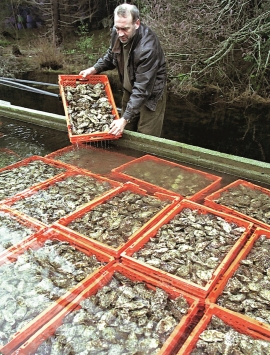- Remove Smallholdings filter Smallholdings
- Remove Plants by the sea filter Plants by the sea
- Remove Maritime environments filter Maritime environments
- Remove Fisheries filter Fisheries
- Remove Igneous rocks filter Igneous rocks
- Remove Vernacular crafts filter Vernacular crafts
- Remove Avalanches and rock falls filter Avalanches and rock falls
- Remove Tysnes filter Tysnes

Espevik
220 million years ago, glowing hot molten rock masses intruded into fractures in the earth's crust in the outer parts of Hordaland. Some of these are believed to have reached the surface and formed lava flows, which since have been eroded away by wind and weather. But, most of these flows solidified into diabase sills before they got to the surface.



Nedrevåge
Vågsbygdo was severely hit by landslides and rock falls in the decades around 1700, in addition, the rivers transported masses of loose sediment, both large stones and gravel. A lot of what slid down from the Vågsliene (slopes at Våg) collected in Neravåge. It was so bad that the damage “never again can be remedied or restored”, it was said in 1670.

Vernøya
If you smell a foul smell out in nature, you mustn't immediately think that the reason is cloaca from houses or cabins. The reason can be an entirely natural process that occurs when plants are broken down under special conditions. When there is little oxygen available, hydrogen sulphide can be produced. This is a gas that seeps up from the earth and smells like rotten eggs.


